– is a small and peaceful community and a local train station across the Stjørdal river from Trondheim Airport, Værnes.

It is famous for two reasons. The second reason is that Miss Universe 1990, Mona Grudt, was born and grew up in the vicinity and used this address.

A bridge to Hell, across the Stjørdal River, close to Trondheim Airport, Værnes. Although appropriate, I assume that the sign on the bridge is meant for the tourists. They seem to appreciate it, because in the past the sign tended to disappear. Now it has been thoroughly fastened; all nuts have been welded to the steel structure.
(2007-09-20)
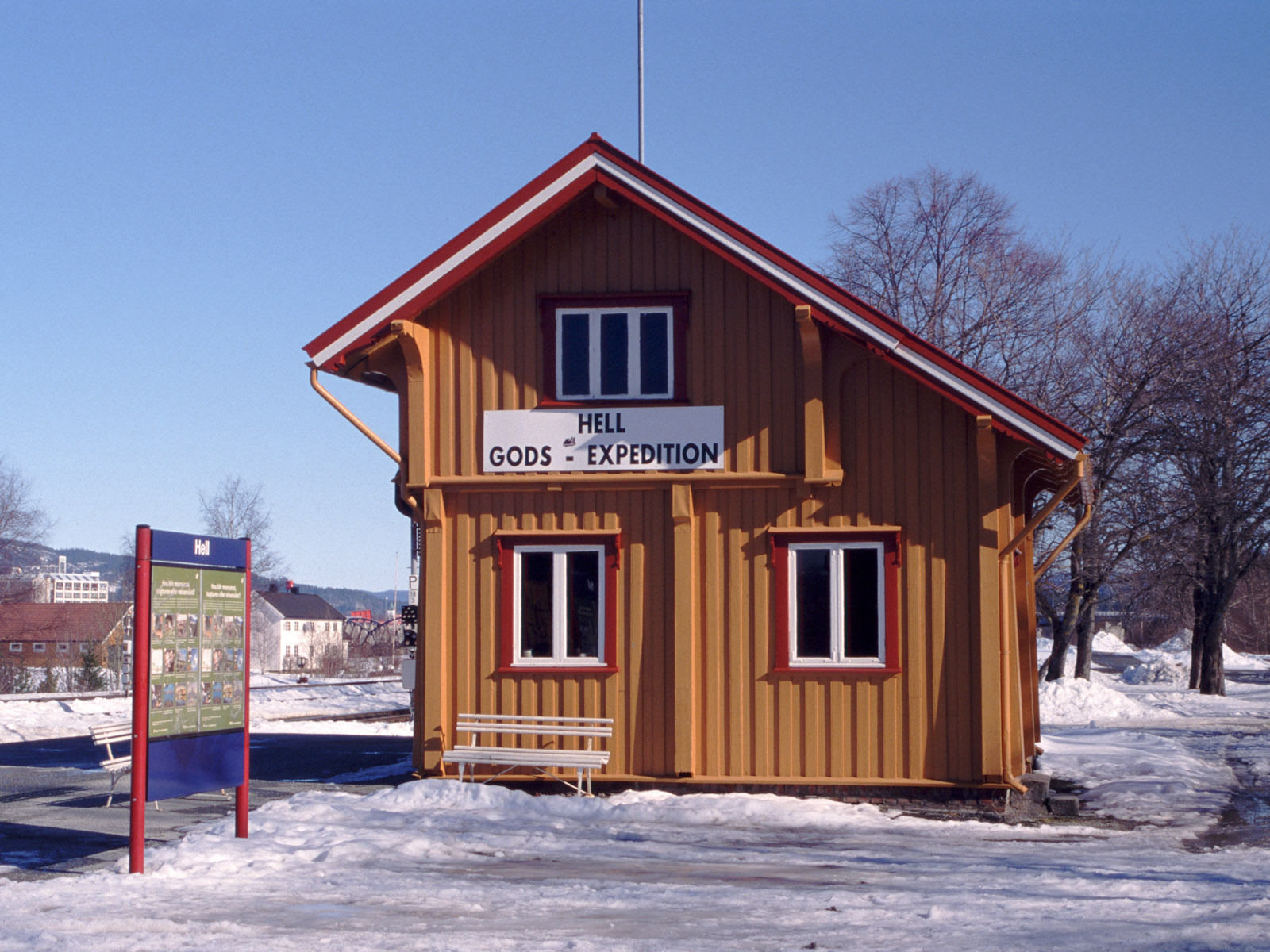
Some foreign words are – let's say – interesting. In this case the name has been used to attract tourists. Tourism is business, and business doesn't always mean good taste. The lower word on the sign was originally 'godsekspedisjon' meaning baggage/freight office. 'Gods' is equivalent to English 'goods', and ekspedisjon ('expedition') has in Norwegian the additional meanings of 'forwarding' or 'sending', and 'office for serving the public' (both may be appropriate here). The strange spelling on the sign may pass as accidental Norwegian-Danish. Incidentally – there hasn't been a baggage of freight office here for decades.
Notice the snow? It's certainly melting, but that's because it's springtime. Remember, though, that if we can speak of a equivalent to the Christian Hell in the Old Norse religion, it was not scourging hot, but very cold.
(2002-04-15)
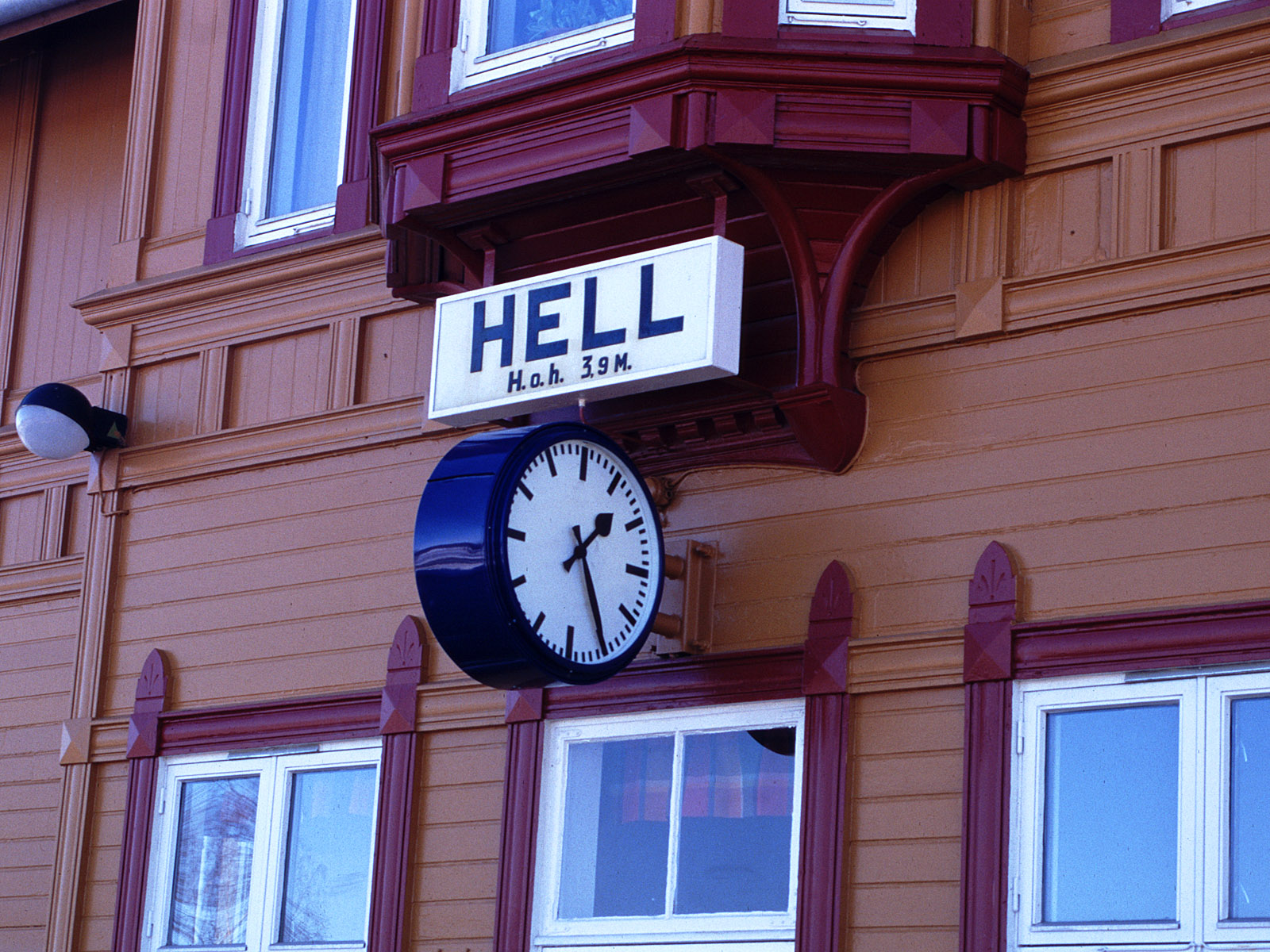
The Hell train station. Local trains may stop here, but the building doesn't belong to the railway any more.
(2002-04-15)
The name Hell stems from Old Norse 'hellir' (now 'heller'), which means a cave or an overhanging cliff that may be used for shelter. There are three of those in Hell proper. The acts of William the Conqueror in 1066 had a profound effect on the English language, but still many words are similar to corresponding Norwegian words. Thus 'Hell' in English is 'helvete' in Norwegian, coming from Old Norse 'helvíti', i.e. hel + víti, the latter meant 'punishment' and the former was the same in Old English.
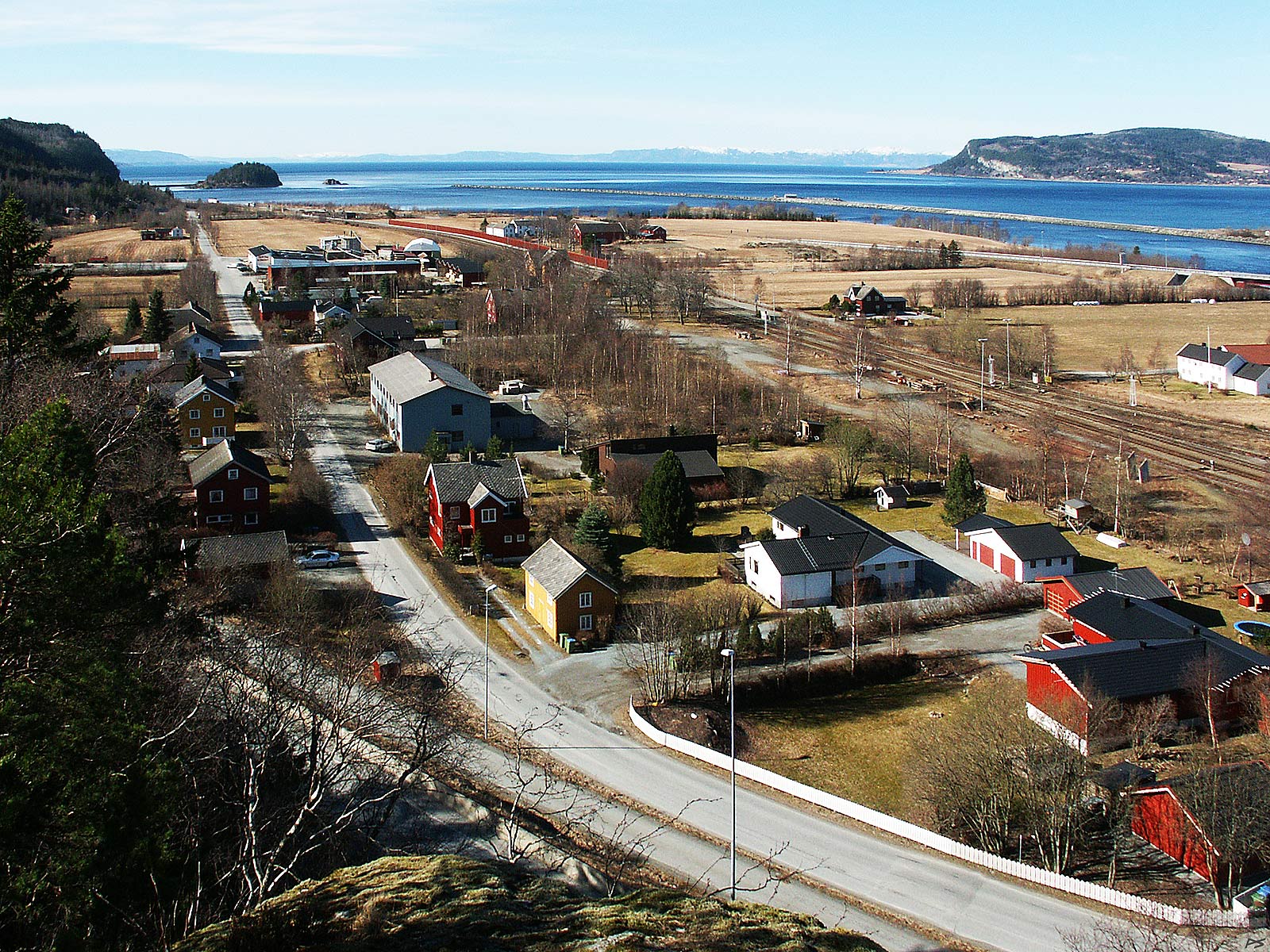
Hell, early spring view from the hill behind the train station (discernible above the picture centre). Hell is a bit larger than this, about 350 inhabitants I've heard, but nobody is able to define the boundary. It's situated in the old administrative unit Lånke south of the Stjørdal River. Now Lånke is merged with Stjørdal on the north side of the river and the common name is Stjørdal. But to most tourists it's all Hell.
(2004-04-02)
The name Hell is useful as a tourist attraction. Hell lies on the south side of the river (Stjørdalselva) where there hasn't been much available space for tourist business, whereas the north side of the river has been more favourable, and it's closer to the airport.

|
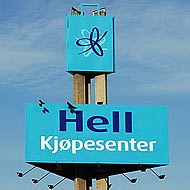
|
|
|
Rica Hell Hotel |
Hell Shopping Center |
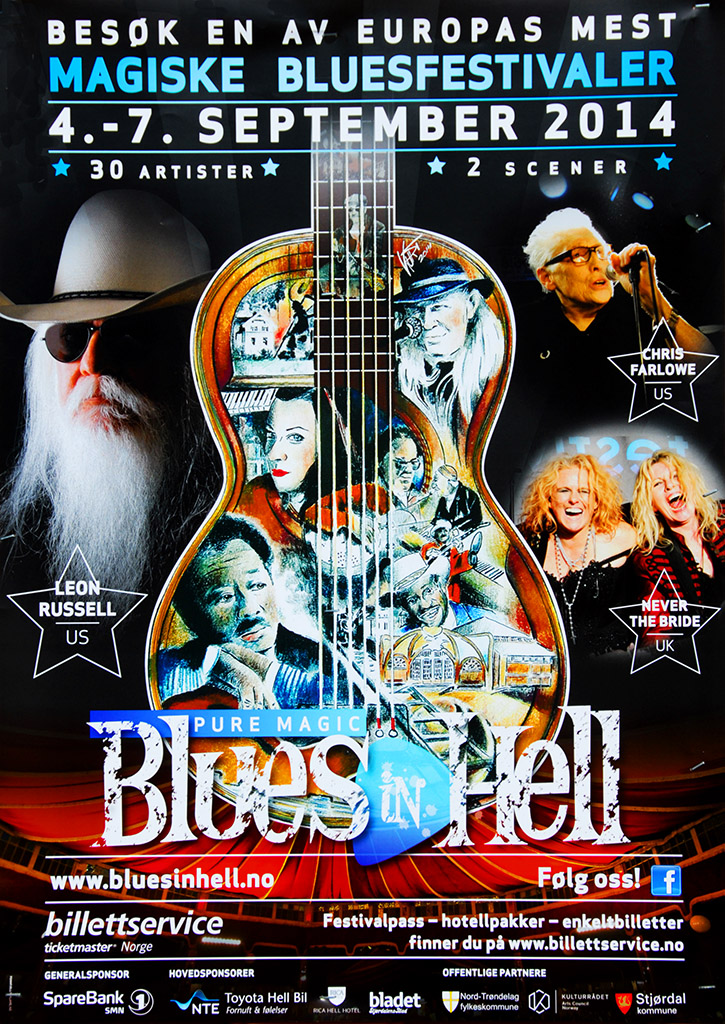
On the other hand, the annual Blues in Hell festival is taking place on the correct side of the river, in heated tents close to the famous train station in Hell proper. This poster is old, but the festival goes on (2021).
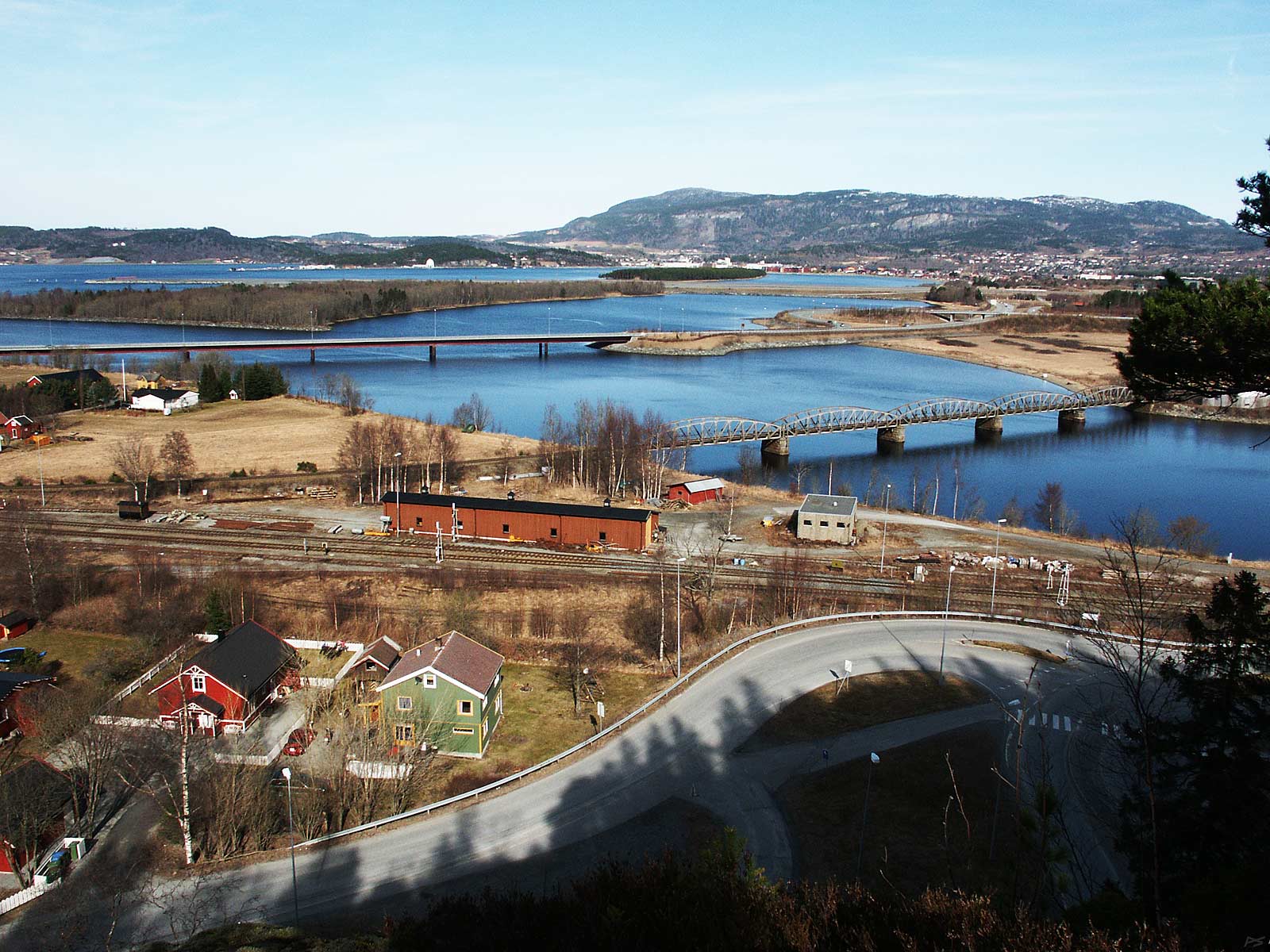
The mouth of the Stjørdal river viewed from the hill behind the Hell train station in early spring. Trondheim airport Værnes is close by, but on the north side of the river, the west end of the runway discernible. Renaming it to 'Trondheim airport Hell' has to my knowledge never been proposed, thank God.
(2004-04-03)
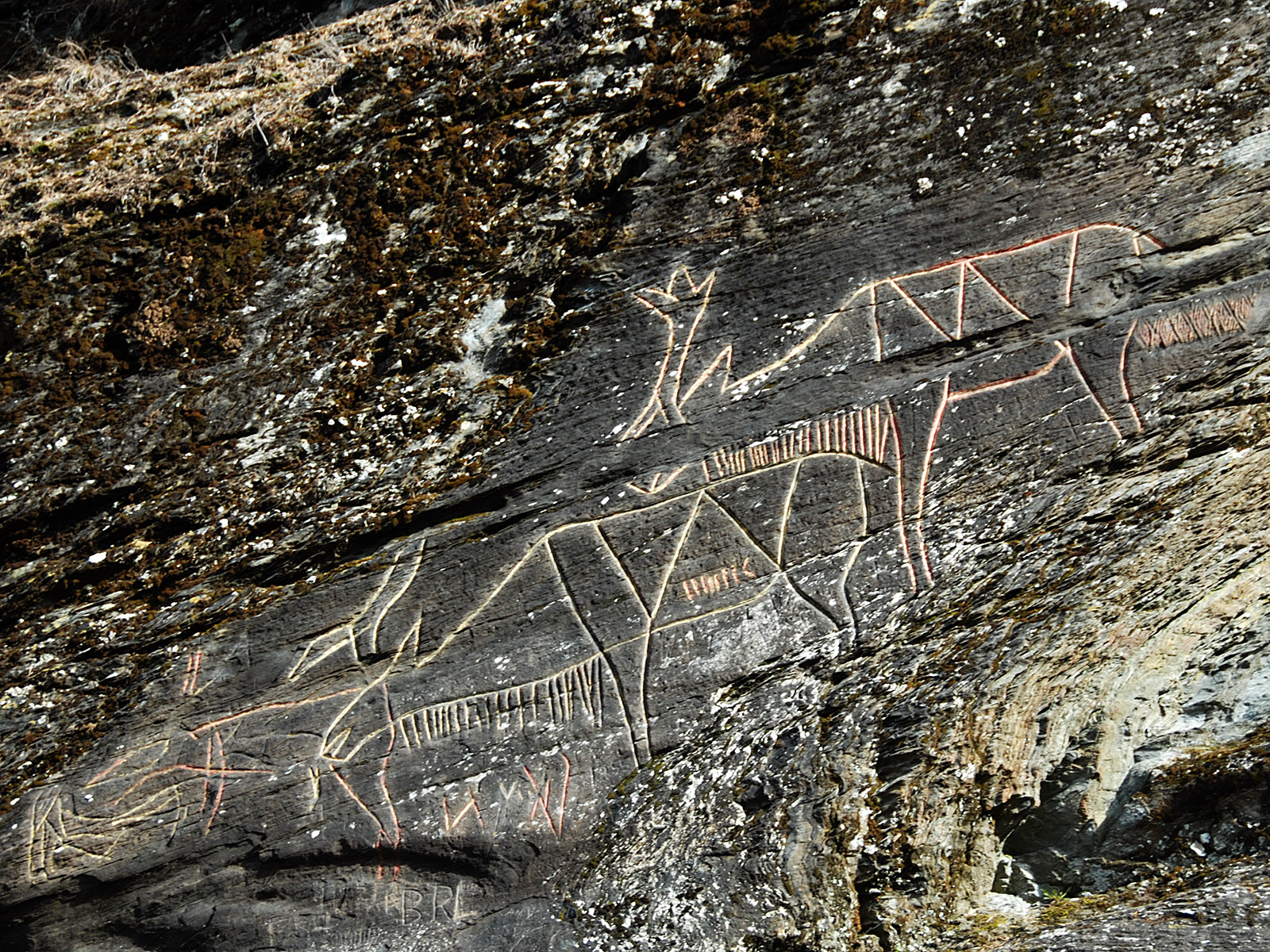
On the hill above the Hell train station there are several rock carvings, maybe 5000 years old. Similar petroglyphs are found in several places throughout the country.
(2008-04-11)

Detail of the petroglyph. This is evidently about game; at that time hunting was essential for survival.
(2008-04-11)
"The Mayor of Hell"
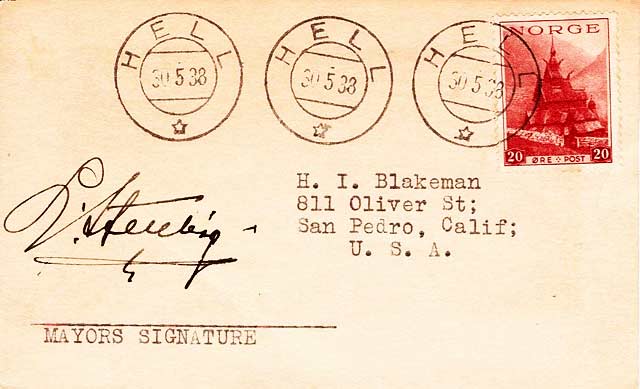
A letter from Hell by courtesy of Paul Petosky, Michigan. It was mailed in 1938 by Lieutenant Lorentz Stenvig, then Chairman of the Lånke District Assembly (Lånke was then an administrative unit, Hell is a village in Lånke). Being invited to New York to participate in Robert L. Ripley's "Believe It or Not" radio show on NBC, Stenvig went there in April 1938. He was then consistently referred to as the "Mayor of Hell". Quoting The New York Times, April 16, 1938: "The Mayor of Hell, a gentle, pensive man with none of the attributes of the fabled overlord of the infernal regions, arrived yesterday ...". Upon his return Stenvig was often referred to as, translated from Norwegian, "the [army] major from Hell". Since the military rank of major is written identically in North American English and Norwegian, this might have been either an intended or an unintended mistake (mayor⇒major; few Norwegians spoke English then, and he was a military man). The stamp depicts the Borgund stave church and the postage in Norwegian kroner has increased 60-fold since then.

 More about "The Mayor of Hell"
More about "The Mayor of Hell"